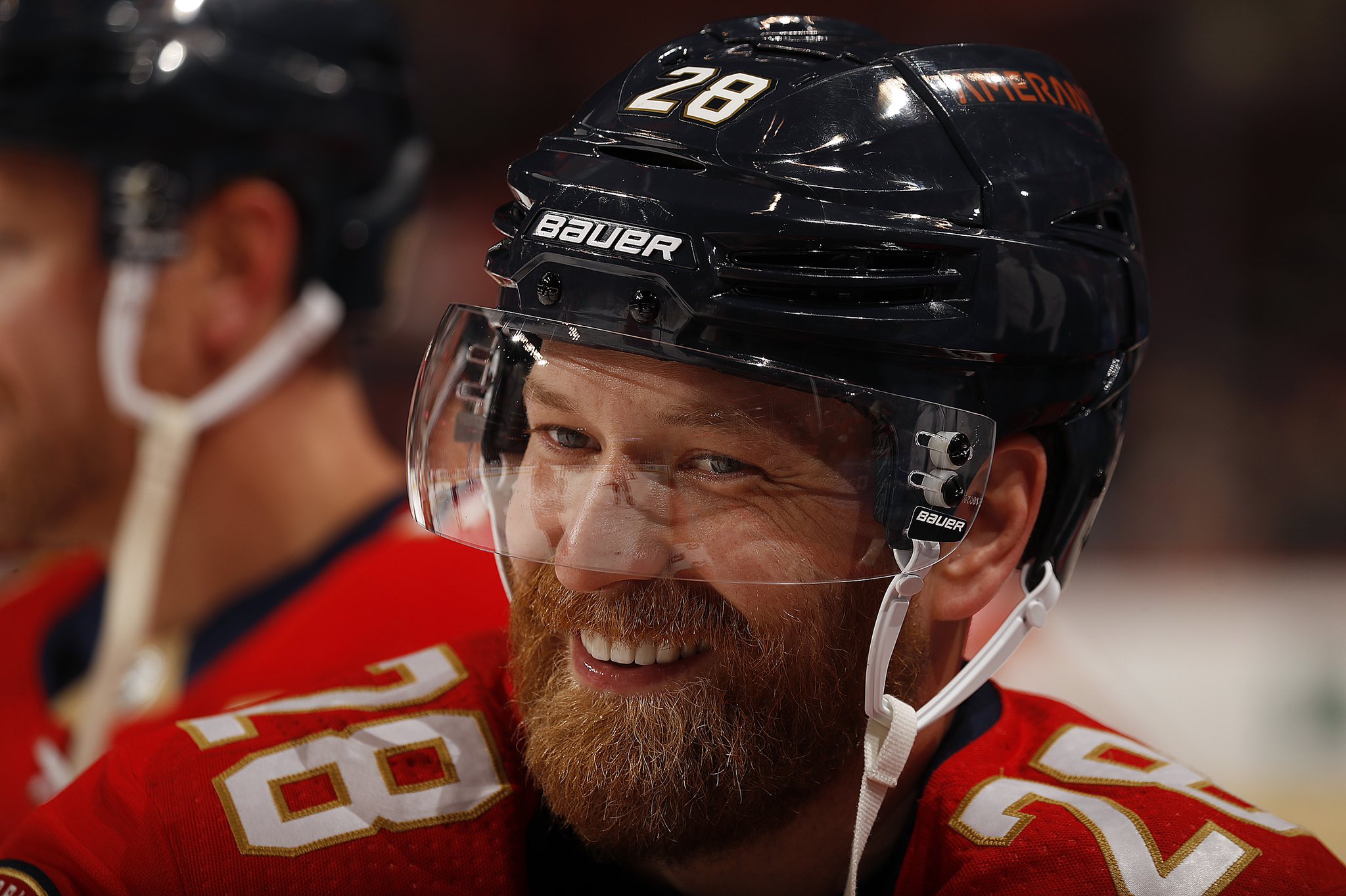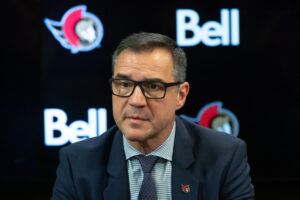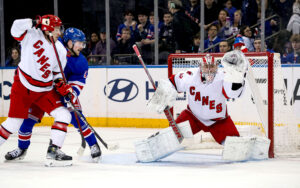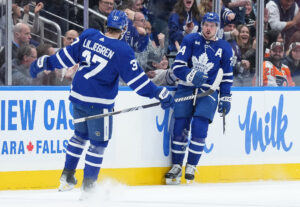Player development seems to always result in more questions than answers. How likely is it for a top pick to pan out? What makes a player a “steal”? Last Word On Hockey will be starting a new series on how to properly develop prospects from all different spots throughout the draft. This week’s piece involves draft picks in the back-half of the first round and how they were used early in their careers.
Player Development Of First-Round Picks
In the span of 2005 through 2015, there were 84 total selections made between 16th overall and 30th overall on forwards playing in North America. Looking at all 84 forwards, they were split into different categories. Those categories were “Forwards Deemed NHL-Ready and Brought In Immediately When Ready,” “Forwards Near NHL-Ready and Brought In Immediately When Near-Ready,” “Forwards Rushed Slightly,” “Forwards Rushed,” “Forwards Forced,” “A Little Patience,” “Patience,” and “Too Much Patience.”
There were four forwards who fell into the first category on the list. Those four players are Claude Giroux, Mathew Barzal, Kevin Hayes, and Mark Jankowski. In this piece, we will look at the two players who made their NHL impacts in their DY+3 season: Giroux and Barzal.
Player Development Of Claude Giroux
Giroux, drafted 22nd overall by the Philadelphia Flyers in 2006, came out of the QMJHL’s Gatineau Olympiques organization. However, in his DY-1 season, he played in the CJHL with the Cumberland Grads, scoring 13 goals and 27 assists for 40 points in 48 games. That was good for 0.833 points per game, which ranked 36th out of the aforementioned 84 forwards in DY-1 production. He followed that up with his QMJHL rookie season, scoring 39 goals and 64 assists for 103 points in 69 games, for 1.493 points per game. That ranked 14th out of the 84 forwards in DY production.
Claude Giroux notched a personal season-high three assists tonight and won 80% of his faceoffs (12-15).
He has amassed 15 points (2-13-15) over 12 games since joining the #FlaPanthers. pic.twitter.com/VoYeAfEdQB
— Florida Panthers PR (@FlaPanthersPR) April 16, 2022
Upon getting drafted, Giroux would play two more QMJHL seasons with Gatineau. In his DY+1 season, he scored 48 goals and 64 assists for 112 points in 63 games, for 1.778 points per game. That ranked third among 82 players still outside the NHL in DY+1 production. Then, in his DY+2 season, he would score 38 goals and 68 assists for 106 points in 55 games, for 1.927 points per game. That ranked second among the 70 forwards still outside the NHL in DY+2 production. Following this season, the Flyers would give him his chance.
How Was Giroux Used?
In his first professional season, Giroux would split between the AHL and NHL. In the AHL, he would play 33 games, scoring 17 goals and assists for 34 points. Meanwhile, in the NHL, he posted nine goals and 18 assists for 27 points in 42 games, while averaging 15:10 time on ice per game. Analytically, Giroux posted really strong numbers as well. His even-strength offence goals above replacement (EVO) and even-strength defence goals above replacement (EVD) were both solid, at 4.0 and 0.4, respectively. His overall game was also solid, on top of the even-strength stats, with a wins above replacement (WAR) of 1.1 and a goals above replacement (GAR) of 6.2.
In his second season, Giroux would play full-time with the Flyers and never look back. In 82 games, while averaging 16:37 per game, he scored 16 goals and 31 assists for 47 points. Analytically, however, he would take a step back. His EVO (0.1) and EVD (-0.6) dropped to very unimpressive numbers. That led to his WAR (0.7) and GAR (3.9) to fall quite a bit, though his special teams impact kept them at decent scores.
Flyers Show Strong Player Development, Giroux Proves Them Right
Despite the rough underlying numbers, the Flyers stayed the course and gave Giroux a bigger role in his third season. This time, in 82 games, he averaged 19:24 per game. He went on to score 25 goals and 51 assists for 76 points, proving the Flyers player development to be fruitful. Analytically, his EVD would continue to fall (-1.4) but his offence would make up for it completely. His EVO (9.6) was excellent, and it led to his WAR (2.8) and GAR (15.7) to rise towards elite territory.
After that successful third season, Giroux would go on to be one of the decade’s best players. He would play 10 more full seasons with Philadelphia (2011-2021) before being dealt in the middle of the 2021-22 season. In that 10 and a half year span, he played 792 games, scoring 241 goals and 509 assists for 750 points. After being dealt to the Florida Panthers, Giroux would finish the regular season with three goals and 20 assists for 23 points in just 18 games, showing he’s still got it. Giroux recently signed with the Ottawa Senators.
Player Development Of Mathew Barzal
Barzal, who was drafted 16th overall by the New York Islanders in the 2015 NHL draft (sorry Bruins fans), came out of the WHL’s Seattle Thunderbirds organization. In his DY-1 season, he recorded 14 goals and 40 assists for 54 points in 59 games, for 0.915 points per game. That ranked 32nd among the 84 forwards in DY-1 production. He would follow that season up with 12 goals and 45 assists for 57 points in 45 games, for 1.296 points per game. That ranked 28th among the 84 forwards in DY production. After getting drafted, like Giroux, Barzal would spend two more seasons in juniors with the Thunderbirds.
In his DY+1 season, Barzal scored 27 goals and 61 assists for 88 points in 58 games, for 1.517 points per game. That ranked 11th out of 82 forwards still outside the NHL in DY+1 production. In his last WHL season, he scored 10 goals and a nice 69 assists for 79 points in just 41 games, for 1.927 points per game. That ranked second among the 70 forwards not yet in the NHL in DY+2 production. Following this season, Barzal would make his NHL-debut.
How Was Barzal Used
In his first season, unlike Giroux, Barzal would immediately stay full-time with the Islanders. In 82 games, Barzal would score 22 goals and 63 assists for 85 points, while averaging 17:46 per game. He would win the Calder Trophy for Rookie of the Year. Barzal’s underlying stats were outstanding in all but his EVD (-0.7). His EVO (12.3) was elite. His WAR (4.0) was elite. And, his GAR (20.7) was elite too. Those numbers were better than Jeff Skinner’s rookie year, which was arguably the best rookie year in this study to this point.
In his second season, the expectations would rise. In 82 games, he scored 18 goals and 44 assists for 62 points, while averaging 17:55 per game. His underlying numbers, though still good, were worse. Barzal’s EVO (3.8) was nowhere near elite anymore. His WAR (1.3) and GAR (7.0) were both still strong, but not elite. But there is one positive; he improved his defensive impact, with an EVD of 0.7.
More Ice Time, Similar Results
In his third season, Barzal would average 20:03 per game, a massive raise from the two prior seasons, across 68 games. In that role, he would score 19 goals and 41 assists for 60 points. While his stats were on track to be better than the year prior, his analytics would return to the pattern established in his rookie year, but with a much lower offensive impact. His EVD (-0.9) would return to below-replacement-level, and his EVO (6.4) would improve but remain shy of being elite. The same could be said about his WAR (1.4) and GAR (8.1), as both improved, but neither entered elite territory.
Following that third season in 2019-20, he has played 128 games, all as an Islander, scoring 32 goals and 72 assists for 104 points. His rookie season remains as his best year as an NHLer, and he still remains with the Islanders who are coming off a rough season last year. In this situation, the Islanders could not have done much more player development-wise. They gave him some time to develop in juniors and waited until he was NHL-ready. At least, based on per game stats, to call him up. Then, they gave him more ice time with each passing season. Barzal is still an excellent player. But it seems as though he isn’t quite that elite NHL player he seemed to be as a rookie.
Junior league stats via Elite Prospects, NHL stats via Hockey Reference, NHL analytics via Evolving Hockey.






